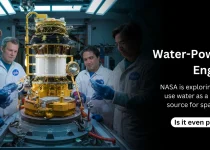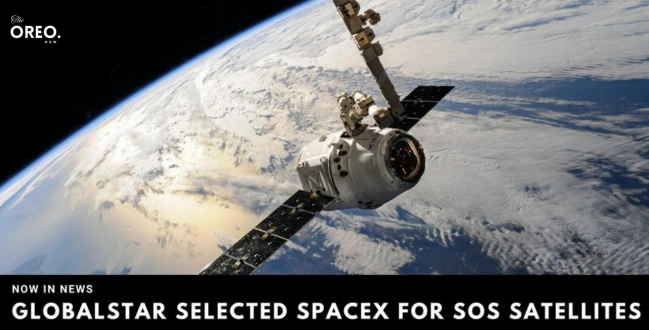NASA’s Voyager 2’s Heartbeat Signal: A Sign of Life in Deep Space
NASA announced that they had received a “heartbeat” signal from Voyager 2, confirming that the Voyager 2 spacecraft is still alive and operating.
NASA received a heartbeat signal from Voyager 2 spacecraft on 1st Aug 2023. The signal was detected by NASA’s Deep Space Network, a system of radio telescopes that are used to communicate with spacecraft in deep space.
The reason the signal is so weak is because Voyager 2 is now very far away from Earth. It is currently about 14 billion miles (22.5 billion kilometers) from Earth, and the signal has to travel through a lot of space to reach us.
About Voyager 2 spacecraft
NASA’s Voyager 2 was sent into space on August 20, 1977, from Cape Canaveral, Florida. It traveled together with another spacecraft called Voyager 1. Voyager 2’s main job was space exploration of the big planets made of gas: Jupiter, Saturn, Uranus, and Neptune.
In its 46 years of space exploration, Voyager 2 also brought along something special called the Golden Record. This record contained sounds and pictures from Earth, and it was meant to be a friendly message for any smart aliens it might meet out there.
Voyager 2 did something amazing by being the first spacecraft to go to Uranus and Neptune. It found out some really cool stuff about these planets and their moons. For instance, it learned that Uranus is tilted a lot, and Neptune has a big storm called the Great Dark Spot, just like Jupiter’s Great Red Spot.
Voyager 2 traveled very far and left our solar system on November 5, 2018. Now it’s in the space between stars, and it’s the only thing made by humans to reach there. Even though it’s so far away, Voyager 2 is still working and sending us information.
Ever wondered where is NASA’S Voyager 2 Right now?
Where is NASA’s Voyager 2 now?
As of August 2, 2023, Voyager 2 is really far away from Earth, about 133.041 times the distance between the Earth and the Sun which is 133.041A.U. It’s moving at a very fast speed of about 38,000 miles per hour (61,000 km/h).
Voyager 2 is now in the interstellar medium, the space between stars. It’s the only human-made thing to have ever reached this far. Voyager 2 is still sending us information about the interstellar medium, and scientists think it will keep doing that for many more years.
The signal from NASA’s Voyager 2 spacecraft
On August 1, 2023, NASA’s Deep Space Network (DSN) heard a special signal from Voyager 2. This happened because there was a problem, and the spacecraft couldn’t talk to us on Earth for a while.
But don’t worry, the “heartbeat” signal is like a little whisper from Voyager 2’s radio, letting us know it’s still alive and working. Even though the signal doesn’t have any information in it, it tells us that the spacecraft is okay. Engineers are now trying to fix the communication so we can talk to Voyager 2 again.
The signal from Voyager 2 is weak because the spacecraft is really, really far away from Earth. To fix the communication problem, engineers are doing something clever. They are sending a command to Voyager 2 to turn its antenna towards Earth again.
This way, the spacecraft can send data back to us. By analyzing this data, engineers can figure out what caused the technical problem and how to make everything work well again.
Read the blog: NASA’s Deep Space Food Challenge For Future Astronaut Food – Finalists Announced!
If everything goes well, we should be able to talk to Voyager 2 again in October. But don’t worry, even if we can’t talk to it directly right now, scientists and engineers can still keep an eye on the spacecraft.
They use different information like the radio signals it sends and the solar wind readings to know where it is and where it’s heading. So, Voyager 2 is not lost, and we’re still keeping track of it.
Where is NASA’s Voyager heading?
The spacecraft is going towards a group of stars called Camelopardalis. It will take around 300,000 years for it to reach the Oort cloud, which is a big group of icy objects around our solar system.
Voyager 2 might keep traveling through space and explore deep fields of space for a super long time, maybe billions of years, but eventually, it could get pulled and destroyed by the strong gravity of a star or a black hole.
Future of NASA’s Voyager 2’s space exploration
The future of NASA’s Voyager 2 space exploration is uncertain, but it is likely to continue for many years to come. The spacecraft is currently in its extended mission of studying interstellar space, and it is still sending back valuable data about the environment beyond the heliosphere.
The power supply on Voyager 2 is slowly declining, and it is estimated that the spacecraft will run out of power sometime in the 2030s. However, even after the power supply fails, Voyager 2 will continue to travel through space, albeit without any instruments to collect data.
It is possible that Voyager 2 will eventually encounter another star system, but it is more likely that it will simply continue to drift through interstellar space for billions of years. The spacecraft is carrying a golden record containing greetings from Earth, and it is hoped that one day it will be found by an alien civilization.
Here are some of the things that scientists hope to learn from Voyager 2 in the years to come:
- How does the solar wind interact with the interstellar medium?
- What is the composition of the interstellar medium?
- Are there any other stars with planetary systems?
- Is there any evidence of life beyond Earth?
Voyager 2 is a truly remarkable spacecraft, and it has already made many important discoveries. It is an inspiration to us all, and it is sure to continue to teach us new things about the universe for many years to come.




2 Comments